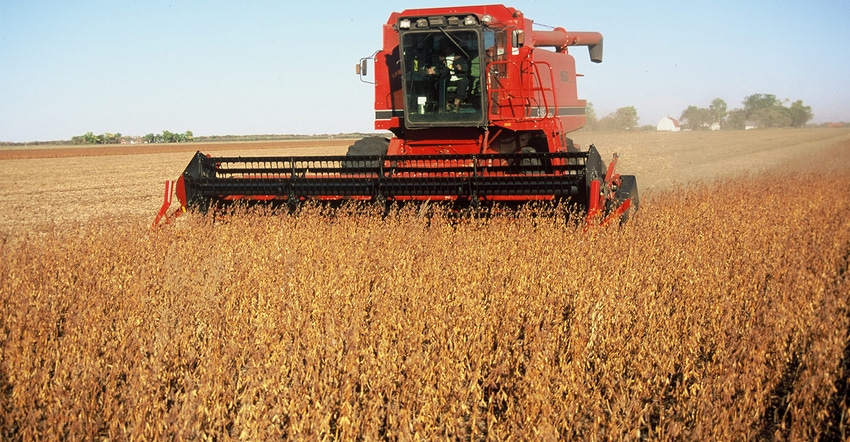September 10, 2018

Plan to store soybeans you harvest this fall until late spring or even midsummer next year, advises Frayne Olson, North Dakota State University Extension grain marketing specialist.
Even if China reduces or removes tariffs on soybeans soon, it is going to take at least spring or mid-summer to get the flow of grain to back it were it was, Olson says.
About 75% of North Dakota’s soybean production has been going to China, but elevators have not been able to sell soybeans into the Pacific Northwest (PNW) export terminals since June, and there currently is no bid for soybeans PNW terminals through Feb 2019.
Most North Dakota grain elevators probably aren’t going to offer delayed pricing contracts because they won’t have a place to store soybeans this fall. Many aren’t even offering bids on soybeans this fall, he says. They’re just trying to figure out where they are going to store the soybeans that they pre-purchased.
"Local prices are going to be depressed for quite some time," he says.
Cash flow solutions
Olson recommends figuring out other ways to generate the income that you usually received from selling soybeans in the fall. You may have to sell corn or spring wheat instead. Or — if you have sunflowers, dry edible beans or flax — you may have to sell more of those. Most minor market crop prices haven’t been as affected by the trade war with China as soybean prices, he says.
Be ready to sell soybean futures if a trade deal is suddenly announced and there is a "pop" in futures prices, Olson advises. Have a marketing account set up with your bank and be talking regularly to a broker. You may also be able to contract with an elevator. However, don’t set the delivery in a nearby month. Give yourself some extra time to make delivery, he advises.
Finally, look into Commodity Credit Corporation (CCC) loans. Loan rates are low and you’ll either have to pay back the loan or deliver the grain at the end of nine months, but the loans are a way to generate some cash flow.
Storage checklist
If you hope to successfully store soybeans until next spring or mid-summer, make sure they are not harvested too dry this fall, says Ken Hellevang, NDSU Extension agricultural engineer. The drier the soybeans, the more splitting and cracking of the seed coat you’ll have, which will reduce how long the beans can be stored without spoiling.
Soybeans should be harvested at 11% to 13% moisture, with 13% being ideal. Below 11% moisture, damage increases significantly.
Rapidly cool soybeans to about 30 degrees F for winter and then keep them as cool as possible in the spring and summer to increase the length of time they can be stored.
If you don’t have enough bin space to store soybeans, consider using grain bags. Soybeans going into grain bags need to be dry, Hellevang says. Set up the bags north to south so there is even heating on both sides of the bags. Place them where there is good drainage that will take water away from the bags.
You can store soybeans outside in a pile or bunker, but both must be covered and aerated or too many soybeans will spoil when it rains, Hellevang says.
More information
See Olson’s and Hellevang’s videos on marketing and storing soybeans this year at the North Dakota Soybean Council website.
You May Also Like




